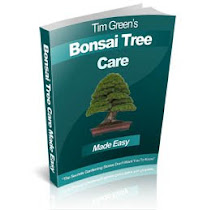The Zelkova bonsai is a well-known variety of bonsai which is particularly well-liked because of its resistant to bug infestations as well as disease complications. This particular aspect helps it be a fairly easy tree to cultivate. However it is primarily the resistance that additionally causes it to be one of the most costly bonsai trees. Probably the most popular shape that you will come across in a Zelkova bonsai may be the broom or Hokidachi style which it is referred to as in Japanese.
The two most in-demand types of the Zelkova bonsai include the Japanese Grey Bark elm and the Chinese Zelkova. The first kind features a vigorous rate of growth. The Chinese Zelkova is a scaled-down variant of the Japanese Zelkova and features a bark which is a brownish or greyish shade.
Raising from Seeds
It is possible to grow this kind of tree from seeds or from a sapling. Because it can be expensive, growing Zelkova bonsai from seeds has become a popular option. You must find a reputable bonsai seed distributor for the best quality. One that I can recommend is
Bonsai Boy of NY
.
Click here to learn more about Indoor Bonsai Seeds
Watering and Lighting Requirements
The Zelkova bonsai, just like every other bonsai needs sufficient watering. Because it is potted within a compact area, it's going to need watering frequently. Even so, you should not water it too much. The Zelkova would not want wet roots, particularly for the duration of wintertime. Ultimately, it is best to water the bonsai only in the morning hours and then leave it on its own for the remainder of the day.
In the time of summer, you should mist the bonsai with water several times throughout the day.
The Zelkova needs natural light and thus, it should be placed in a spot where it can receive partial or full natural light. Throughout the summer season you need to store it in partial shade to prevent the leaves from getting dried out.
Feeding and Fertilizer
A well-balanced feeding is essential towards the proper development of your bonsai. One half dose fertilizing should be done each 7 days, or a full dose every alternating week. You can use an organic eco-friendly fertilizer on your tree from early spring to fall with no worry.
Bug Infestation and Diseases
A normal functioning Zelkova bonsai is certainly able to fight off a variety of diseases and unwanted pests. Therefore make certain that you don't weaken the tree with frequent wounds and cuts. Prune your bonsai only as needed to avoid any complications.
Potting your Bonsai
Besides each one of these, keep in mind that the Zelkova bonsai needs repotting early on in the spring which really should be performed each year. Having said that, when the tree grows older, you should only repot every few years. The Zelkova has to have deep pots with fertile and well-drained dirt.
Click here for more information about Bonsai Training Pots
Additional Considerations
It is easy to train a Zelkova bonsai to mirror the natural growth of a full sized Zelkova tree. You should employ the use of bonsai wires, strings and sticks to attain this appearance. Small curves may also be formed in the tree by affixing little bamboo terraces to the limbs.
Click here for a tutorial of Bonsai Tools 101
Even so, when using the wires on the Zelkova bonsai, be cautious, since the limbs of this tree tend to be small and delicate.






